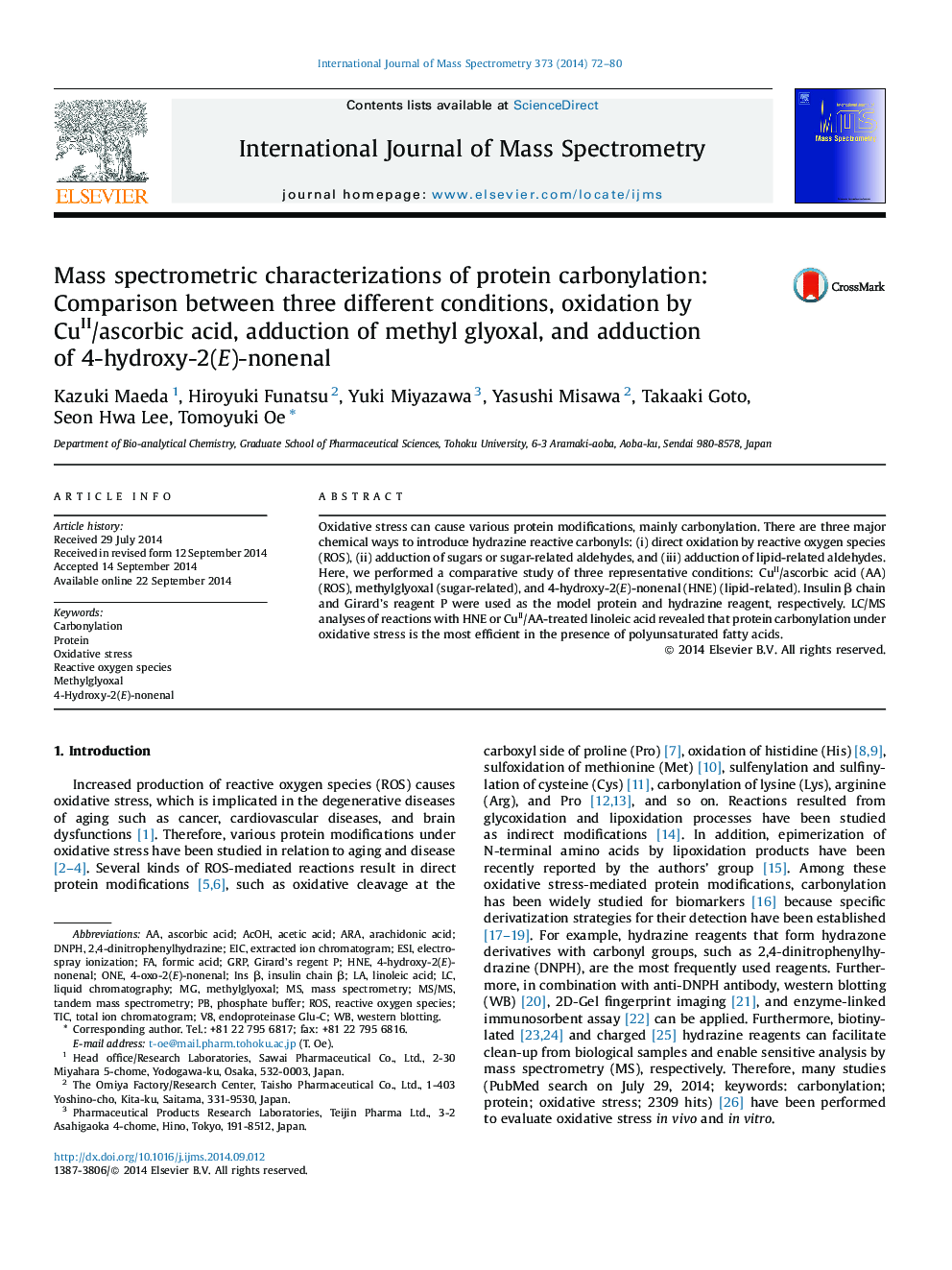| Article ID | Journal | Published Year | Pages | File Type |
|---|---|---|---|---|
| 1192838 | International Journal of Mass Spectrometry | 2014 | 9 Pages |
•Protein carbonylation reactions were examined by mass spectrometry.•Reactions of three different types of carbonylation were compared.•Carbonylation occured efficiently in the presence of ROS and lipids.
Oxidative stress can cause various protein modifications, mainly carbonylation. There are three major chemical ways to introduce hydrazine reactive carbonyls: (i) direct oxidation by reactive oxygen species (ROS), (ii) adduction of sugars or sugar-related aldehydes, and (iii) adduction of lipid-related aldehydes. Here, we performed a comparative study of three representative conditions: CuII/ascorbic acid (AA) (ROS), methylglyoxal (sugar-related), and 4-hydroxy-2(E)-nonenal (HNE) (lipid-related). Insulin β chain and Girard’s reagent P were used as the model protein and hydrazine reagent, respectively. LC/MS analyses of reactions with HNE or CuII/AA-treated linoleic acid revealed that protein carbonylation under oxidative stress is the most efficient in the presence of polyunsaturated fatty acids.
Graphical abstractFigure optionsDownload full-size imageDownload high-quality image (218 K)Download as PowerPoint slide
